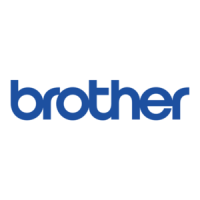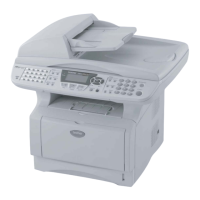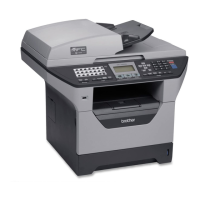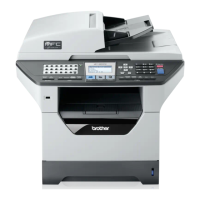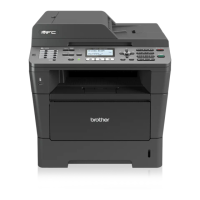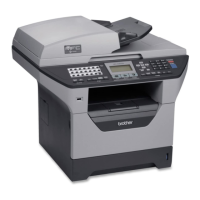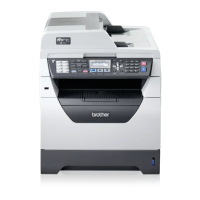CHAPTER 4 DISASSEMBLY AND RE-ASSEMBLY
4-68
5. Precautions for hand soldering operations
1) Soldering operations using lead-free solder are basically the same as those using tin-
lead solder, however, due to the lead-free solder's characteristics of being difficult to
melt, wet, and spread, as well as being hard, a soldering iron needs to be applied for
a longer period of time than when soldering with conventional tin-lead solder. While
soldering is being performed, it must be confirmed that the lead-free solder is
spreading. When solder needs to be added when repairing PCBs, the solder must
only be added after sufficiently melting the previously soldered area. When poor
soldering is repaired, the solder of the poorly soldered area must be sufficiently
removed and lead-free solder newly supplied.
2) Before starting soldering operations, it must be determined whether or not the PCB
has an "LF" indication. If the PCB has an "LF" indication, lead-free solder
corresponding to the digit following "LF" must be used. Conventional solder
including lead (tin-lead solder) must not be used on a PCB that has an "LF"
indication. (Use of tin-lead solder on a PCB having an "LF" indication is prohibited.)
3) A soldering iron for exclusive use with lead-free solder must only be used; a
soldering iron used for soldering with tin-lead solder must not be used with lead-free
solder. The use of soldering irons designed for lead-free solder is desirable (see "7.
Soldering iron" below).
4) The requirement for the temperature of the soldering iron’s tip is the same as that for
soldering using conventional solder; the temperature of the soldering iron's tip must
not be raised even though the melting point of the lead-free solder is higher. The
temperature of the soldering iron's tip is restricted to the temperature that the
component to be soldered can resist. It should be noted that the temperature that
the components to be soldered with lead-free solder can resist has not increased
even though the melting point of the solder has.
5) A soldering iron must be correctly applied.
Even though the melting point of the solder has increased, soldering operations must
be performed with the soldering iron’s tip at the same temperature as prescribed
before. Therefore, heat needs to be effectively applied from the tip of the soldering
iron to the base metal. For effective heat application, the shape of the soldering
iron's tip and application of the soldering iron (position and angle relative to the base
metal) need to be more strictly controlled than before.
6) The soldered point must be left as it is after the soldering iron is removed for a period
of time longer than that required when soldering is performed with conventional
solder.
The amount of heat applied to the base metal increases due to the higher melting
point of the lead-free solder, and the base metal is heated to higher temperatures.
Consequently, it takes time for the melted solder to cool and to solidify and,
therefore, the soldered area must be left as it is after the soldering iron is removed for
a longer period of time.
7) A localized ventilation system and gloves are required for soldering operations.
Lead-free solder does not contain the toxic substance lead, however, inhalation of
the fumes may adversely affect the health of workers. The silver contained in lead-
free solder is also a toxic substance, though it is not as toxic as lead, and, therefore,
a localized ventilation system and gloves are required for lead-free solder soldering
operations, as required for those with conventional solder.
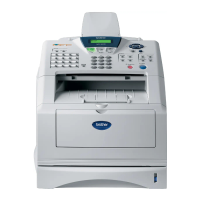
